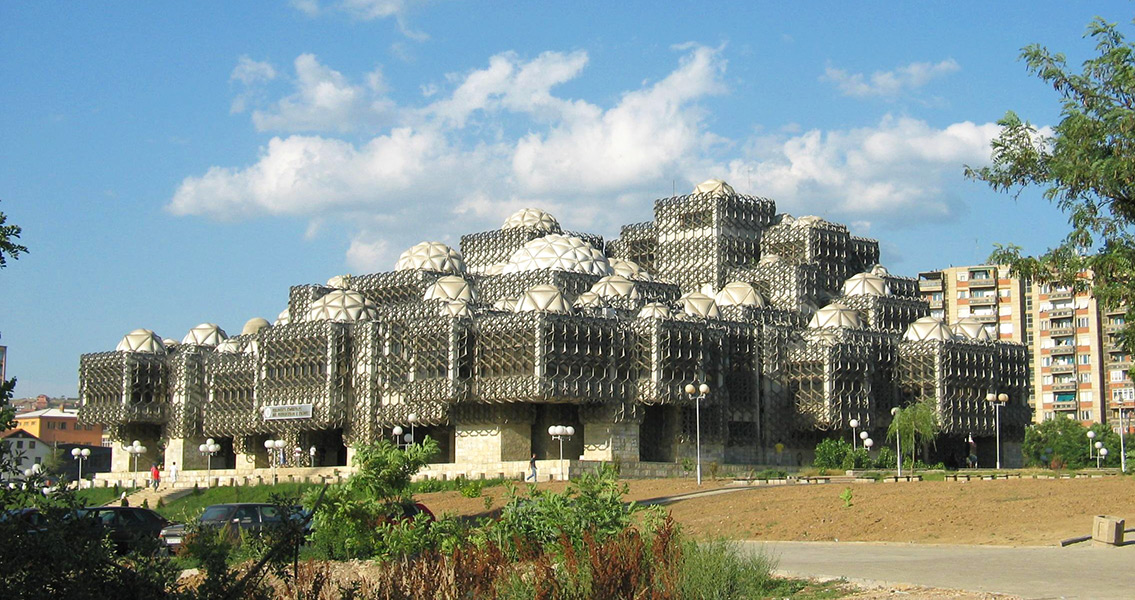<![CDATA[On 24th March, 1999, NATO's military involvement in the Kosovo crisis began with the bombing of Yugoslavia. The attack on Yugoslav military positions in the province of Kosovo was the start of a controversial three month campaign designed to halt Serbian ethnic cleansing against Kosovar Albanians. Kosovo is a province held sacred in Serbian culture. During the twelfth century it lay at the heart of the Serbian Empire, ruled by the Nemanjic dynasty. The seat of the Serbian Orthodox Church, it held great significance for Serbian history, having been the site of a devastating military defeat to the Ottoman Turks in 1389, and then returned to Serbia following the Balkan Wars in 1913. Former leader of Yugoslavia, Josip Broz Tito, had granted Kosovo significant autonomy in the 1970s, effectively allowing it to act against Serbian interests. Once the dissolution of Yugoslavia began in the late eighties, this history combined into growing tension between the demographic majority of Kosovar Albanians in Kosovo, and Serbians. In 1989, Slobodan Milosevic, leader of Serbia's Communist Party, became president of Serbia. A key part of his victory had been promises of returning Kosovo to Serbian control, and he moved quickly to assert Serbian dominance, sending troops to Kosovo in 1990 in order to disband its government. Kosovo's ethnic Albanians, led by Ibrahim Rugova, initially protested against Milosevic's actions through non-violent means. The failure of Milosevic to heed these protests, alongside the reluctance of the international community to get involved, eventually saw the escalating tensions between the ethnic groups turn violent. In 1996, the Kosovo Liberation Army was formed and launched a series of attacks on Serbian police and politicians. In 1997, using weapons purchased from Albania, it increased the severity and frequency of the attacks, escalating into an armed uprising. In 1998, Serbian forces launched a counter offensive into Kosovo, aiming to reclaim the territory lost to the KLA. The rest of 1998 was dominated by fighting between the KLA and Serbian forces, with reports emerging of the Serbian army having massacred civilians and forced thousands of ethnic Albanians from their homes. NATO made the first threat of airstrikes in October 1998, leading to a temporary peace and a promise by Milosevic to allow thousands of Albanian refugees to return to Kosovo. Milosevic, by then president of what remained of Yugoslavia, failed to meet the terms issued by NATO, and fighting resumed when the KLA restarted its attacks on Serbian forces. Serbia's response, a program of ethnic cleansing of Kosovar Albanians, drew outrage from the international community and led to an arms embargo being issued. Failed peace talks in Paris proved the final straw, and on 24th March NATO airstrikes began. The attacks targeted the Serbian military, as well as the country's infrastructure and government, in an attempt to undermine Milosevic's authority. For the first few months they failed to achieve the desired result, instead seemingly inspiring a new intensity in the Serbian forces' desire to drive out all ethnic Albanians from Kosovo. Eleven weeks after the start of the bombing campaign, NATO and Yugoslavia finally signed a peace accord, one which outlined a plan for the withdrawal of Yugolsav and Serbian troops, and the return of displaced refugees to Kosovo. A NATO peace keeping force would also be present in the region, and Kosovo came under UN administration. Internationally the event was hugely significant, questioning the assumption that Europe had become a 'stable continent' following the collapse of the Soviet Union. As the twentieth century drew to a close, the events in Kosovo proved a horrific reminder of the violence from earlier in the century. For NATO the campaign was far from a universal success. Firstly, the delays in its response led to widespread criticism. Secondly, the response itself was fraught with tragic errors, including civilian fatalities, accidental attacks on Kosovar communities and the inadvertent bombing of the Chinese embassy in Belgrade. Finally, when NATO peace troops arrived in the Kosovar capital Pristina, they were met by Russian troops. Eventually, a joint peacekeeping presence in Kosovo was agreed, but the event demonstrated the continued frosty relationship between Russia and NATO regarding influence over eastern and south-eastern Europe. The tensions between Albanians and Serbs carried on into the twenty first century, most prominently in a series of anti-Serb riots in Kosovo in 2004. When Kosovo declared its independence in 2008, it was recognised by the United States and several European Union powers. Tellingly, it was not recognised by Serbia, revealing the continued animosity in the region. ]]>
NATO Enters the Kosovo Crisis
